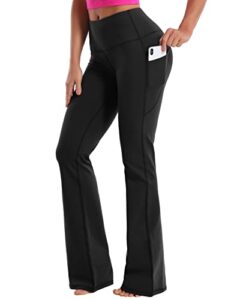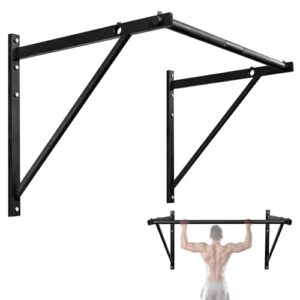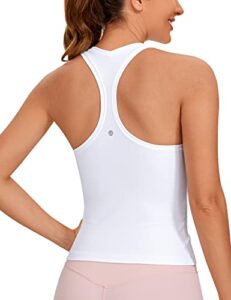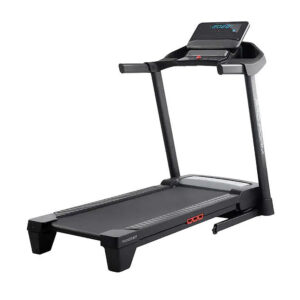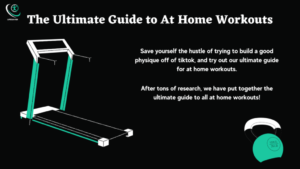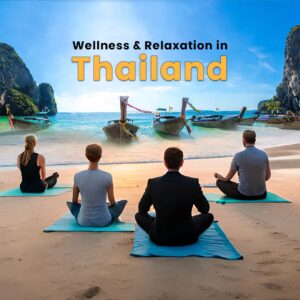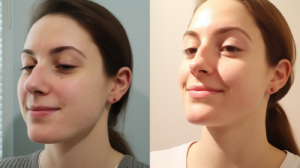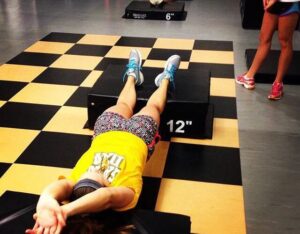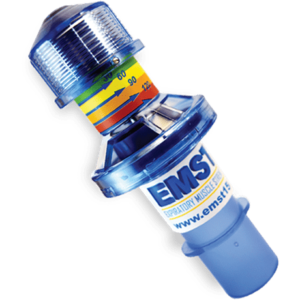Thai Yoga Massage is a therapeutic technique combining stretching and deep massage. This healing art is often performed on the floor with the client dressed in comfortable, loose clothing.
Thai Yoga Massage, rooted in ancient healing traditions, is a dynamic bodywork therapy that promotes physical, mental, and emotional well-being. Practitioners use their hands, knees, legs, and feet to move clients into a sequence of yoga-like poses, blending aspects of acupressure, energy work, and meditation into the experience.
This holistic approach aids in relieving muscle tension, improving circulation, boosting the immune system, and balancing the body energetically. A session typically lasts one to two hours and is tailored to the individual’s needs, making it a highly personalized form of bodywork. Enjoyed by many for its restorative properties, Thai Yoga Massage is ideal for those seeking to increase flexibility, relieve stress, and achieve a greater sense of relaxation and peace.
The Origins Of Thai Yoga Massage
Delving into the heart of traditional healing, Thai Yoga Massage offers a fascinating history. This timeless practice merges massage, yoga, and energy work. Its roots reach far into the past, weaving a tapestry of therapeutic touch and movement.
Ancient Influences And Evolution
Thai Yoga Massage, also known as “Nuad Boran,” traces its origins over 2,500 years ago. Its influences span across India, China, and Southeast Asia. The practice originally drew from Ayurveda and traditional Chinese medicine.
- Buddhist monasteries preserved and nurtured the technique.
- Healers combined yoga-like stretches with rhythmic pressure.
Dr. Shivago Komarpaj, often hailed as the ‘Father of Thai Medicine’, significantly shaped its methodology. Through the ages, local villagers and the royal court embraced the practice, ensuring its continuous evolution and integration.
Thai Yoga Massage In Contemporary Wellness
Today, Thai Yoga Massage stands tall in the realm of holistic health. It’s sought after worldwide for both relaxation and therapeutic benefits.
| Benefits | Description |
|---|---|
| Flexibility | Enhances joint movement |
| Stress Relief | Reduces physical and mental tension |
| Circulation | Improves blood flow |
Spas and wellness centers around the globe offer this massage. Traditional techniques blend with modern understanding to cater to contemporary needs. It shines as a practice that supports both physical and mental well-being in modern society.
Philosophical Underpinnings
The ‘Philosophical Underpinnings’ of Thai Yoga Massage stem from ancient traditions. This healing practice combines physical movements and mindful meditation. It draws deeply on the wisdom of both yoga and Buddhism. The experience transcends physical wellness. It ventures into the realms of spiritual and emotional healing.
The Symbiosis Of Yoga And Massage
Thai Yoga Massage is a dance between two ancient arts. Yoga provides the framework for flexibility and balance. Massage adds layers of deep relaxation and healing. Together, they create a synergistic effect. This union fosters profound transformation in the body and mind.
- Enhanced flexibility through assisted yoga postures.
- Improved circulation via rhythmic massage.
- Release of tension through mindful breaths and movements.
Buddhist Principles In Practice
In Thai Yoga Massage, Buddhist teachings are woven into each session. Practitioners apply metta, or loving-kindness, throughout their touch. This leads to a healing atmosphere. Mindfulness anchors the session.
| Buddhist Principle | Application in Massage |
|---|---|
| Metta (loving-kindness) | Creating a compassionate and healing touch. |
| Anicca (impermanence) | Recognizing and releasing patterns of tension. |
| Anatta (non-self) | Encouraging a sense of connectedness and unity. |
The principles guide not just the technique, but also the intent. Practitioners and receivers grow in spiritual awareness. This journey reveals inner peace and outer wellbeing.
Key Components Explained
Thai Yoga Massage combines touch, yoga, and meditation. It is a healing practice. This unique massage guides the body to feel more open, energized and relaxed. Now, let’s dive into the key components that make it so special.
Understanding ‘sen’ Lines
Imagine your body as a map with invisible lines. These are ‘Sen’ lines. They are like rivers inside you. Energy flows through these lines. Thai Yoga Massage focuses on these lines. It brings balance and wellness. There are ten main ‘Sen’ lines. Here is what they connect:
- Line 1: Connects the belly button to the thigh
- Line 2: Runs from the middle to the sides
- Line 3: Bonds the spine to the leg
- … and seven more lines.
The Role Of Stretching And Acupressure
In Thai Yoga Massage, stretching and acupressure stand out. Both techniques work together.
| Stretching | Acupressure |
|---|---|
| It makes your body flexible | This presses key points |
| Yoga poses help in stretching | It’s like a finger-push massage |
| It helps in deep breathing | Points connect to ‘Sen’ lines |
The stretches open up your body. They give you a sense of freedom. Acupressure wakes up the ‘Sen’ lines. It also releases tight spots. Together, they boost your energy. They make you relax. They help your mind stay calm and clear. This is the essence of Thai Yoga Massage.
The Therapeutic Benefits
Embark on a journey of healing and rejuvenation with Thai Yoga Massage. This ancient practice melds gentle stretching with a sequence of movements to enhance your overall wellbeing. Delve into the myriad of benefits this massage offers, for both your body and mind.
Physical And Mental Health Perks
The dynamic techniques applied in Thai Yoga Massage work wonders on various aspects of physical and mental health. Experience an increase in flexibility, improved posture, and a boost in energy. This massage relieves muscle tension, aiding in the recovery from soreness and improving circulation. Mental benefits are just as impressive, including stress reduction and an uplifted mood.
- Enhanced flexibility
- Better posture
- Increased energy
- Relieved muscle tension
- Improved circulation
- Reduced stress
- Uplifted mood
Holistic Improvement And Healing
Thai Yoga Massage provides a unique integrative approach to healing. It nurtures a balance between body, mind, and spirit, promoting a sense of holistic health. The gentle stretches and pressure points activate your body’s natural healing, propelling you towards enhanced vitality and peace. Embracing this practice can lead to long-term health benefits and a harmonious lifestyle.
| Aspect | Improvements |
|---|---|
| Body | Reinvigorates energy, improves physical balance |
| Mind | Encourages mental clarity, reduces anxiety |
| Spirit | Enhances emotional stability, promotes calmness |
The Typical Session
Welcome to the tranquil journey of Thai Yoga Massage, a unique therapy that blends ancient massage techniques with gentle stretching. In a typical session, serenity pairs with invigoration to rejuvenate your body and soul. Let’s delve into what you can expect and how to prepare for this restful experience.
What To Expect During A Massage
A typical Thai Yoga Massage is a blend of calm and healing. The session usually lasts between one to two hours. Here’s a glimpse of what unfolds:
- Warm welcome and relaxed atmosphere
- Overview of health concerns and comfort levels
- Gentle stretches similar to yoga poses
- Palming and thumbing along energy lines
- Combination of massage and acupressure
- Use of rhythmic motions and gentle rocking
- Focus on breathwork and mindfulness
- Clothing stays on, typically loose-fitting garb
Clients often emerge feeling deeply nourished, with increased flexibility and a serene mindset.
Pre-session Preparation
Proper preparation can greatly enhance your massage experience. Follow these simple steps:
- Choose comfortable clothing that allows for movement
- Avoid heavy meals at least two hours before
- Drink water to hydrate your body
- Arrive early to settle in and relax
- Communicate any concerns with your therapist
Preparing your body and mind ensures an optimal therapeutic experience.

Credit: issuu.com
Learning Thai Yoga Massage
Welcome to the serene world of Thai Yoga Massage, a practice that intertwines the healing arts of ancient Thailand with the spiritual discipline of Yoga. Embracing Thai Yoga Massage not only rejuvenates your body but also brings a calmness to your mind.
Training And Certification Pathways
Embarking on the journey to master Thai Yoga Massage is exciting. Here’s a roadmap:
- Research accredited schools or workshops.
- Select a certified instructor with a profound understanding of Thai massage techniques.
- Enroll in a basic course to learn foundational practices.
- Gain hands-on experience through practical sessions.
- Advance with specialized courses focusing on different therapeutic aspects.
- Obtain certification after completing required hours and assessments.
- Continue learning and growth with continuing education units (CEUs).
Self-practice Vs. Professional Guidance
Balancing autonomy and instruction is key in Thai Yoga Massage training:
| Self-Practice | Professional Guidance |
|---|---|
| Good for basic skills and personal care. | Essential for deep learning and professional development. |
| Use online resources like videos and manuals. | Provides structured learning and expert feedback. |
| Allows flexible schedules for practice. | Mentorship helps avoid common mistakes. |
| May miss subtleties of technique and alignment. | Opportunity for qualified credentials to practice professionally. |
Integrating Thai Yoga Massage Into Lifestyle
Thai Yoga Massage combines stretching, movement, and pressure to improve flexibility and relaxation. This ancient practice can enhance anyone’s lifestyle. Below, explore how to weave the magic of Thai Yoga Massage into daily routines and fitness plans. Embrace a holistic approach to well-being with these easy-to-follow strategies.
Routine Practice For Self-care
Embedding Thai Yoga Massage into regular self-care rituals can provide immense benefits. Start with manageable sessions, such as a 15-minute practice each morning or evening. Short, frequent massages can help maintain flexibility and reduce stress. Focus on breathwork, gentle stretching, and mindful movements aligned with Thai Massage principles.
- Breath Syncing: Coordinate breathing with movements to deepen relaxation.
- Gentle Stretching: Incorporate stretches that target the whole body, emphasizing areas that feel stiff or tight.
- Mindful Movements: Practice with awareness and intent, moving slowly, and respecting your body’s limits.
Incorporating Massage Into Fitness Regimen
Thai Yoga Massage perfectly complements any fitness routine, acting as an active recovery tool. Incorporate massage post-workout, focusing on muscle groups used during exercise. This approach aids in muscle recovery, prevents injury, and increases range of motion. Schedule massage sessions on rest days or after intense workouts for the best results.
| Activity | Massage Focus | Benefits |
|---|---|---|
| Running | Legs and Hips | Promotes circulation and soothes tight muscles. |
| Weightlifting | Back and Shoulders | Reduces soreness and enhances muscle repair. |
| Yoga | Full Body | Deepens stretches and increases relaxation. |
Consistency is key when integrating Thai Yoga Massage into a fitness regimen. Aim for at least one massage weekly, adjusting the frequency to match workout intensity and personal needs. Listen to your body’s signals, and allow Thai Yoga Massage to guide you towards a balanced and healthy lifestyle.
Cultural Respect And Etiquette
Understanding Cultural Respect and Etiquette is crucial when engaging with the profound practice of Thai Yoga Massage. This age-old healing technique is steeped in tradition, demanding mindfulness towards the cultural roots it draws from. Let us delve into the essentials of respecting the cultural heritage of Thai Yoga Massage and the appropriate conduct for both practitioners and recipients.
Cultural Sensitivity And Appropriation
Thai Yoga Massage is an art form reflecting Thailand’s deep spiritual and cultural heritage. Respecting these roots means understanding its significance beyond a mere technique for relaxation. Practitioners must recognize the practice as part of Thailand’s intellectual property. They should actively avoid cultural appropriation by educating themselves and others about the origins and meaning behind the practice.
To show respect, practitioners should engage in:
- Continuous Learning: Keep informed about Thai culture and language.
- Authentic Representation: Ensure marketing materials reflect the true nature of Thai Yoga Massage.
- Inclusive Practice: Honor all clients and fellow practitioners regardless of background.
Protocols For Practitioners And Recipients
The sanctity of Thai Yoga Massage necessitates certain protocols that honor both practitioner and recipient. These protocols create an environment of mutual respect and safety.
| For Practitioners | For Recipients |
|---|---|
|
|
Addressing Common Myths
Thai Yoga Massage is a healing art with ancient roots and modern relevance. But with popularity come misconceptions. In this section, we’ll debunk myths about Thai Yoga Massage to help you understand what it truly offers. Let’s uncover the truth together.
Separating Fact From Fiction
Many people think Thai Yoga Massage is just stretching. That’s not true! This unique therapy combines gentle stretches, guided breathing, and pressure points therapy. The idea that it’s only for flexible people? Another myth! Thai Yoga Massage is for everyone. It aids flexibility, but does not require it.
Dispelling Misconceptions
- It’s Painful: Some believe it must hurt to work. Wrong! Thai Yoga Massage is attuned to your comfort level. It can be gentle.
- It’s only for Relaxation: Not just that, it boosts circulation, relieves tension, and helps with balance.
- It’s Similar to Yoga: While it includes yoga-like poses, this massage creates a unique experience tailored to your body’s needs, without the need for you to perform yoga actively.
| Myth | Reality |
|---|---|
| Strict Postures: | Practitioners adapt poses as per individual flexibility. |
| Requires Equipment: | All you need is a mat. No special tools required. |
| Time Consuming: | Offers varied session lengths to fit your schedule. |

Credit: www.linkedin.com
Global Influence And Future
Thai Yoga Massage has journeyed beyond its ancient roots to become a global phenomenon. Not only does it offer deep relaxation and flexibility, but it also blends spirituality with physical wellness. The future looks bright as this healing practice continues to evolve and integrate with global wellness trends.
Thai Yoga Massage’s Place In Global Wellness
Across the world, Thai Yoga Massage builds bridges between traditional healing and modern wellness practices. It is now a staple in many health and spa retreats, loved for its unique combination of yoga stretches and massage techniques. Experts teach this art in workshops and classes, spreading its influence far and wide. The demand for authentic Thai Yoga Massage therapists is climbing, indicating its solid place in global wellness.
Emerging Trends And Innovations
Innovations in Thai Yoga Massage keep it at the forefront of wellness. By blending aromatherapy and choreographed music, spas create multisensory experiences. Some practitioners now incorporate hot stone therapy to deepen relaxation and aid muscle release. New online courses make learning accessible, ensuring a constant flow of certified practitioners who can deliver this incredible service anywhere in the world. Let’s not forget the tools and apps that offer guided sessions for at-home practice, further cementing the global appeal of this treasured healing art.

Credit: www.secret-retreats.com
Frequently Asked Questions Of Thai Yoga Massage
What Is A Thai Yoga Massage?
Thai yoga massage is a traditional healing system combining acupressure, Indian Ayurvedic principles, and assisted yoga postures.
What Does A Thai Massage Involve?
A Thai massage combines acupressure, yoga-like stretching, and compression to enhance flexibility and reduce stress. It’s performed on a mat, with recipients fully clothed.
What Is The Difference Between A Massage And A Thai Massage?
A traditional massage generally involves soft tissue manipulation and relaxation techniques. Thai massage combines stretching, yoga-like postures, and compression to enhance flexibility and energy flow.
What Do You Wear To A Thai Yoga Massage?
Wear loose, comfortable clothing for a Thai yoga massage. Opt for stretchy fabrics that allow for movement and flexibility.
What Is Thai Yoga Massage?
Thai Yoga Massage is a healing practice combining acupressure, Indian Ayurvedic principles, and assisted yoga postures to rejuvenate the body and mind.
How Does Thai Yoga Massage Work?
The technique involves stretching and pressure point activation to stimulate body energy lines, promoting healing, flexibility, and relaxation.
What Are The Benefits Of Thai Massage?
Benefits include improved circulation, reduced stress, enhanced flexibility, pain relief, and a greater sense of well-being and inner peace.
Conclusion
Embracing Thai Yoga Massage offers a harmonious blend of relaxation and rejuvenation. Its age-old techniques unlock a unique wellness journey, enhancing both physical and mental health. Consider this therapy as your pathway to a balanced and revitalized self. Tempted? Book your session and feel the transformation.


